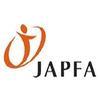Check out what is new in Pig Industry
Find the best technical articles, forums, and videos on Pig Industry at Engormix. Enter now and interact with the world's largest agricultural social network.
...
Comments : 0
Recommendations: 0
Introduction Porcine Epidemic Diarrhea Virus (PEDV) is an enveloped single-stranded positive-sense RNA virus that was first identified in the United States in May 2013. Epidemiological and controlled experiments have shown that complete feed or feed components can be one of many possible vectors of transmission of PEDV. 1 Previous research has shown that a 2% and 1% mixture of caproic, caprylic, and capric acids can reduce the risk of PEDV in a complete swine diet....
Comments : 0
Recommendations: 0
Introduction Manganese is an essential trace mineral that is a key component in carbohydrate, lipid and protein metabolism. According to the NRC, 2 the quantitative requirement for Mn for nursery and finishing diets ranges from 2 to 4 ppm. Assuming bioavailability is not a concern, many swine diets today meet the NRC 2 estimated requirement for Mn from the major dietary ingredients before a trace mineral premix is added to the diet. However, due to the...
Comments : 0
Recommendations: 0
1. Introduction With increasing public awareness regarding pig welfare, gestating sow housing systems are currently changing around the world to group-housing. While the legislation on sows’ group-housing was adopted in 2001 in Europe, the new Canadian regulation was enacted in 2014. The Canadian Code of Practice for the care and handling of pigs requires that all newly built facilities or those undergoing renovation must house sows in groups during gestation, or provide...
Comments : 0
Recommendations: 0
Introduction As many production systems are transitioning from individual gestation stalls to different styles of group housing, there are new challenges for data collection in the gestation barn. Commonly referred to as electronic sow feeders (ESF), computerized feeding stations have been available for more than 30 years as a method used to control the variability of sow intake (Trottier and Johnston, 2001), and now are becoming a powerful tool for sow...
Comments : 0
Recommendations: 0
...
Comments : 0
Recommendations: 0
A presentation prepared for the 24th International Pig Veterinary Society Congress and 8th European Symposium of Porcine Health Management at the Royal Dublin Society (RDS) Dublin, Ireland 8th June 2016. Porcine reproductive and respiratory Syndrome Virus (PRRSV) is the most economically significant infectious disease of swine worldwide. Due to the great impact of PRRS in many key swine producing areas of Asia, Europe and the Americas, the epidemiological situation created by...
Comments : 0
Recommendations: 0
There are several different genetic technologies that have been used to improve trait performance for pig farmers. Some examples would include: a) Terminal Cross Mating System: this is simply using a crossbred female composed of breeds that are best for reproduction as the maternal line animals. The most common examples are the use of a Landrace/Large White F1 female as the parent female. This allows the best breeds for reproduction to exert...
Comments : 1
Recommendations: 2
Introduction The present work addresses the use of data in improving decision making and farm productivity, one of the aspects that has generated more interest in swine production in recent years. In the current review, the limitations of data management and recently developed strategies in this sector have been revised, together with the need for new technologies and their use in the evolution of the precision livestock farming concept. The importance of traditional...
Comments : 0
Recommendations: 0
INTRODUCTION The selection of animals for improved production traits has been, for a long time, the major driver of pig breeding (1, 2). More recently, because of the increasing concern with environment, new selection criteria have been explored, such as nitrogen (N) or phosphorus (P) excretion, which are related to both feed efficiency and environmental impact (3). Residual feed intake (RFI) was also proposed as a possible selection criterion to simultaneously improve feed...
Comments : 0
Recommendations: 0
Introduction Domestic animals are considered to be sentient and endowed with cognitive and emotional abilities. The fact that domestic animals can experience emotional states has resulted in developing methods for welfare assessment and monitoring. However, animal welfare legislation often focusses on housing and management conditions and less on how people behave and interact with them. Yet humans can influence reactions of animals towards them and affect their behaviour...
Comments : 0
Recommendations: 0
Background Primiparous sows (PP) have higher nutrient requirements [1, 2] and fewer piglets born than multiparous sows (MP) [3]. Usually, PP sows are bred before they reach mature body size and when the back fat levels are still limited and often times below the recommendation of 18.0–23.0 mm at first insemination [4]. Part of the nutrient intake of a PP sow during the reproductive cycle is still used for their own tissue growth [5]. Piglet birth weight and growth...
Comments : 0
Recommendations: 0
Introduction Prevention of disease transmission and enhancement of growth and feed efficiency are critical factors in modern pig production. For more than 50 years enteric disease suppression and growth promotion have been effectively achieved by the inclusion of various antibiotics or chemotherapeutics at subtherapeutic doses into diets. The estimated economic benefits in terms of improved growth rates ranged from 3.3 to 8.8% and feed efficiency from 2.5 to 7.0% (Viaene...
Comments : 0
Recommendations: 0
INTRODUCTION The calls for the promotion of variable alternatives to modern health management practices need to be intensified as the rate of shortfalls in the supply of animal protein to the teeming world population continues to widen especially among resource-poor citizens of developing countries. The high cost and non-availability of chemically synthesized allopathic drugs among the local people that constitute the majority of the livestock farmers promote these shortfalls as...
Comments : 0
Recommendations: 0
Introduction Ileitis (proliferative enteropathy of pigs), caused by the obligate intracellular parasite, the bacterium Lawsonia intracellularis, is the most common intestinal infection worldwide, affecting piglets in the rearing and fattening pigs. Arnold et al. (2018) detected a whole group of pathological changes in the small intestine. The disease occurs in four different forms, namely: regional ileitis, intestinal adenomatosis, hemorrhagic enteropathy, necrotic enteritis. It...
Comments : 0
Recommendations: 0
Introduction Porcine Cytomegalovirus (PCMV) belongs to the β-herpesvirinae family and, despite being species-specific, it shares homology with cytomegaloviruses of human and other animals [1]. PCMV infection is usually subclinical in older pigs, but similar to the human cytomegalovirus, it can cross the placenta and often produces mummification, abortion, low viability of piglets at birth and consequential pre-weaning mortality [2]. In susceptible herds, the virus...
Comments : 0
Recommendations: 0
Swine dysentery (SD) caused by Brachyspira hyodysenteriae is a highly contagious disease of grower and finisher pigs. SD causes severe mucohemorrhagic diarrhea, resulting in decreased feed efficiency and increased morbidity. Necrotic enteritis (NE) caused by Clostridium perfringens is characterized by high mortality in poultry with bloody diarrhea, and sudden death. B. subtilis and B. licheniformis have been identified from the gastrointestinal tract of...
Comments : 0
Recommendations: 0
Introduction Due to considerable changes in the pig industry worldwide in favour to groups-housing systems, understanding social behaviour of pigs and its impact on welfare has become increasingly important. The wild counterparts of pigs are highly gregarious and form complex hierarchical structures of multigenerational and matrilineal social units centered around several philopatric females associated with their cohorts of offspring [1,2]. Despite occasional breakdown in...
Comments : 0
Recommendations: 0
Introduction Colibacillosis is generally defined the infection with Escherichia coli characterized by many clinical forms. E. coli is a gram negative peritrichously flagellated bacteria belonging to the family Enterobatteriaceae and is the causative agent of a wide range of diseases in pigs, including neonatal diarrhoea, post-weaning diarrhoea (PWD), oedema disease (ED), septicaemia, polyserositis, coliform mastitis (CM) and urinary tract infection (UTI) (Fairbrother and Gyles,...
Comments : 0
Recommendations: 0
Introduction With information technology, commercial herds have collected and stored many data. New technologies are expanding the possibilities for data collection, information-exchange, collaboration and data analysis. However, the use of these data have been limited. Farm data analysis can help veterinarians and producers to identify a production problem that they did not recognize and make a better decision about solutions. Furthermore, data analysis could increase the...
Comments : 0
Recommendations: 0






















